Should this ‘K.F.C.’ hamachi collar be L.A.’s new dish of the moment?
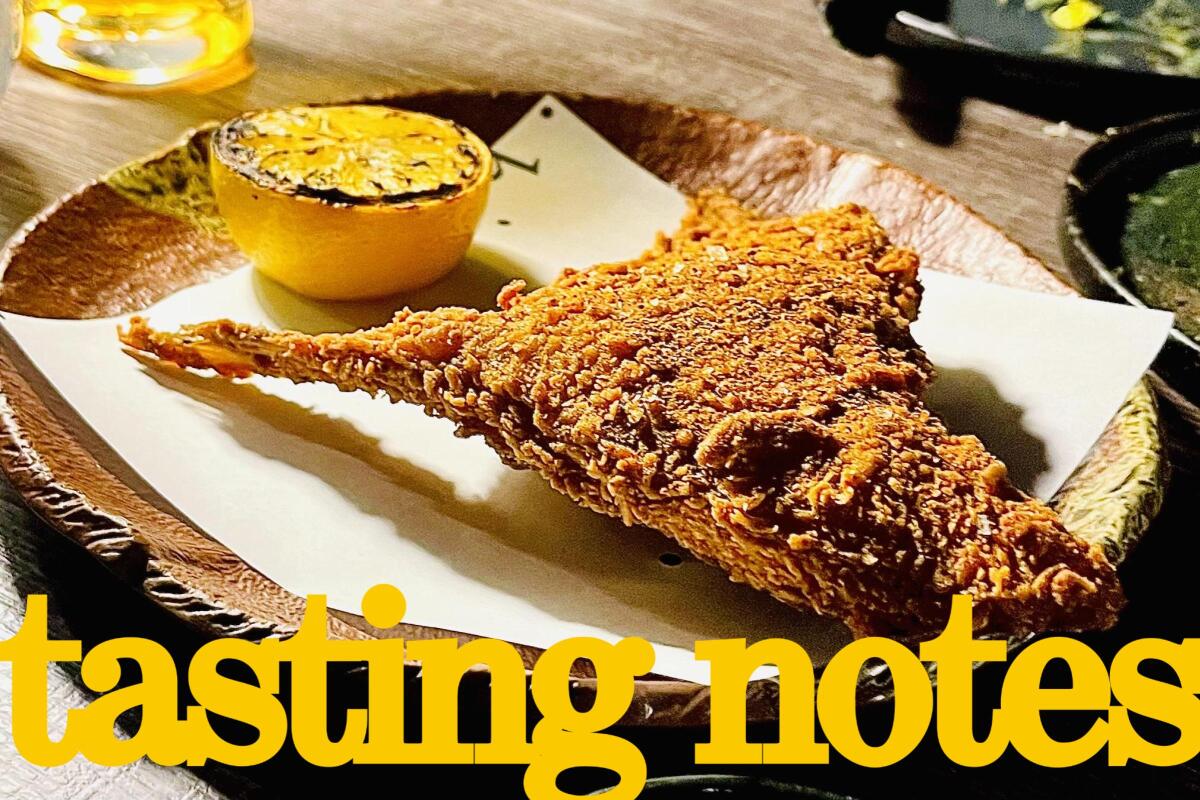
- Share via
When K.F.C. means Korean fried hamachi collar, a crawl with Mr. Chow, the review of Baroo, a street food activist’s complexities and in “Fargo” a man makes biscuits. I’m Laurie Ochoa, general manager of L.A. Times Food, with this week’s Tasting Notes.
Hooked, fried and collared
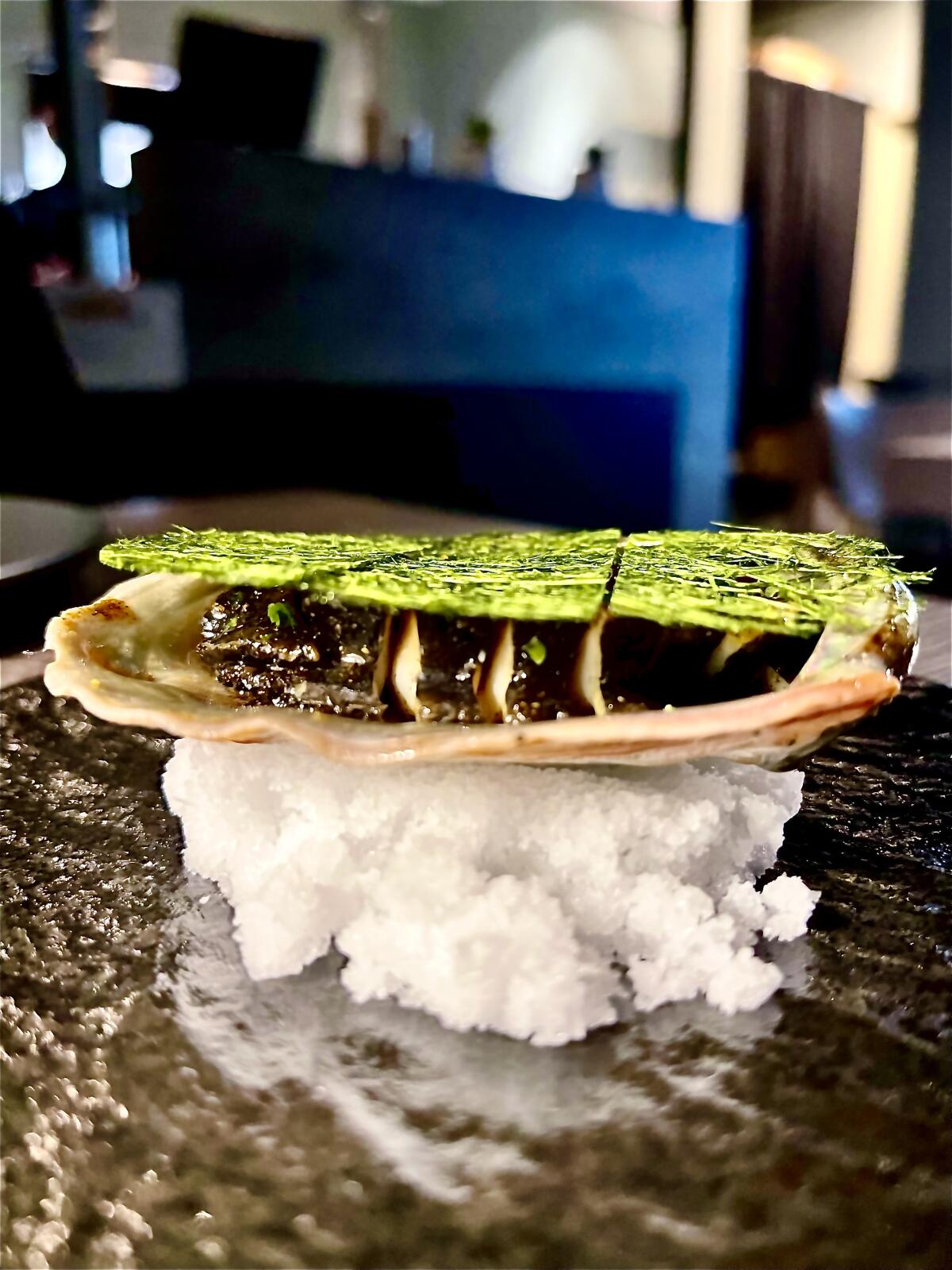
There are many great dishes to admire at Hibi, a Koreatown strip mall restaurant that started as a ghost kitchen, transitioned into casual Japanese rice bowl and tempura spot, and then late last year achieved Michelin Bib Gourmand status after, as Stephanie Breijo reported, brothers Sol and Albert Lee hired chef Daniel Kim, who completely revamped the menu into something much more ambitious.
Kim, who was sous-chef for the Michelin three-star Restaurant at Meadowood before it was destroyed in the 2020 Glass fire and also cooked at Le Cirque in Las Vegas and Providence here in Los Angeles, brings Japanese and Korean influences into his cooking, which goes as well with an Echigo rice lager as it does with an Anderson Valley Pinot Noir or a bottle of sake or soju.
The night I was in, just after the start of the new year, there was abalone grilled over binchotan with delicate gamtae seaweed balanced on top, smoky grilled maitake mushrooms with egg dashi sabayon, duck with kabocha squash rice and sea bream with fantastic coal-roasted sweet potatoes.
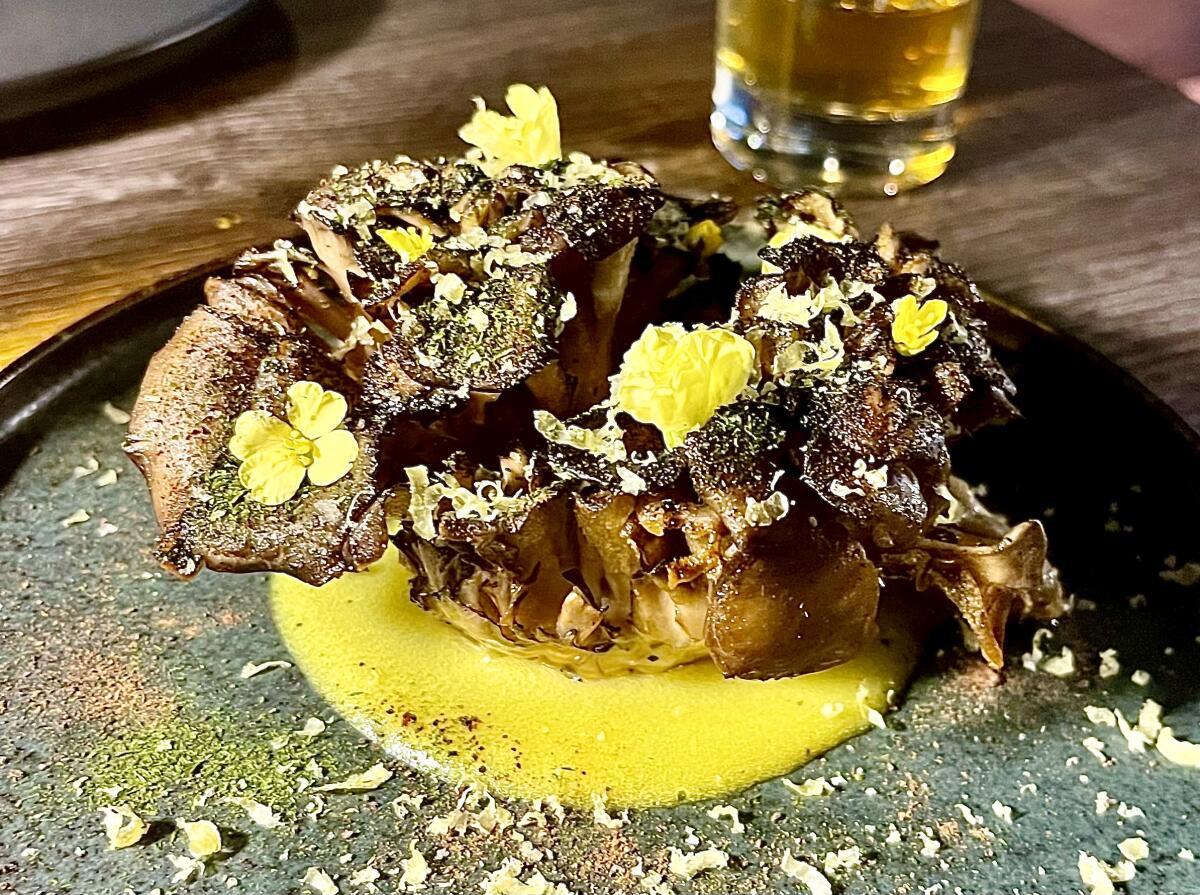
But there was one dish that stood out for its charm, crunch and inventiveness: the “K.F.C.” or Korean fried hamachi collar.
I’ve had fried hamachi collar before and liked it — a lot. But Kim’s version, taking a cue from Korean fried chicken, coats the collar in a batter that fries up crisp and golden in an even layer but leaves the fish tender and luscious. Ever since I ate it, I’ve been wanting to go back for more. It’s the kind of dish you can imagine becoming a citywide obsession. If Hibi ever opens a food truck, this should be their dish.
At the moment, Hibi is a relative bargain for a restaurant with such high-end cooking. The K.F.C. hamachi is $24 as are the mushrooms; the fish, which changes according to the catch available and comes with a full meal of sides (vegetables, those great sweet potatoes, garlic-ginger rice and Japanese pickles) is $72, but it’s a dish that is easily shared as a main course for two.
True to its shape-shifting ways, however, I heard as I was leaving the restaurant that Hibi will soon begin showcasing Kim’s cuisine in a tasting menu. As excited as I am to find out what Kim will come up with next, I love this particular iteration of Hibi. Ambitious but still affordable.
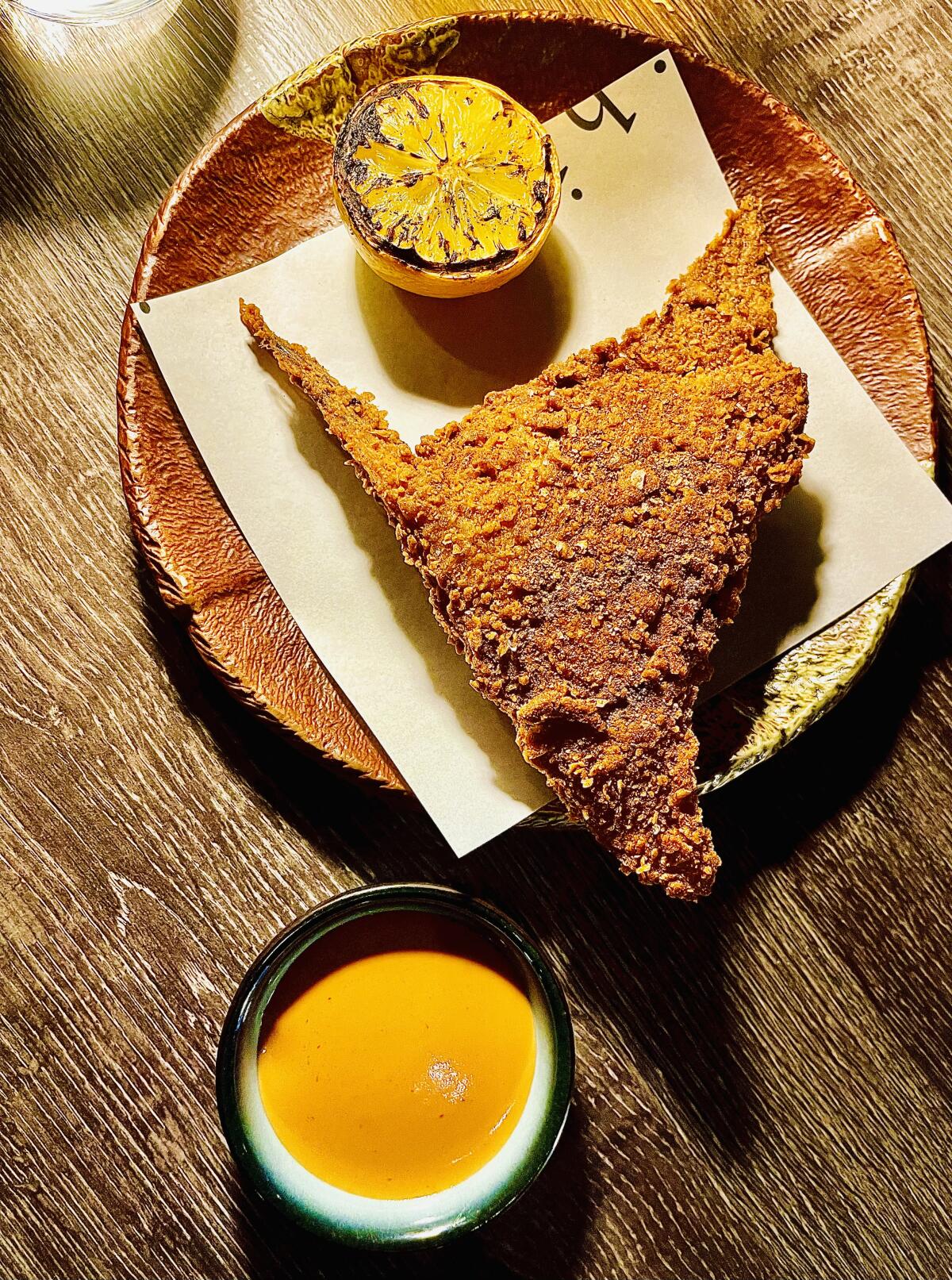
You’re reading Tasting Notes
Our L.A. Times restaurant experts share insights and off-the-cuff takes on where they’re eating right now.
You may occasionally receive promotional content from the Los Angeles Times.
Love thine enemy ... and let him stir in the Bisquick

A man makes biscuits. A man eats biscuits. A man finds peace.
That is the basic action in the final scene of “Fargo’s” Bisquick-obsessed Season 5, which aired this week. Throughout the season we watch housewife Dot (Juno Temple) transform into a tiger-like fighter when attacked by men sent by the abusive sheriff husband (Jon Hamm) she escaped years earlier before finding happiness with new husband Wayne (David Rysdahl). Anytime Dot needs a reset after fending off her assailants, she turns to her box of Bisquick and makes pancakes, stirring briskly as she plots her next move.
And so, in the season finale when the mysterious killer Ole Munch (Sam Spruell) turns up in Dot’s living room after she thought all her enemies were vanquished, she pulls out the Bisquick and persuades Munch to help her prepare drop biscuits. Her baking lesson, given with nervous kindness, along with the generosity of guileless Wayne and wiser daughter Scotty (Sienna King), soothes a wary Munch, who talks of having to eat the bitter sins of others.
“You wanna know the cure?” Dot asks Munch. “You gotta eat something made with love and joy, and be forgiven.” Munch takes a bite of the biscuit and he smiles.
Complex motivations of the ‘Michael Moore’ of street vendor defenders
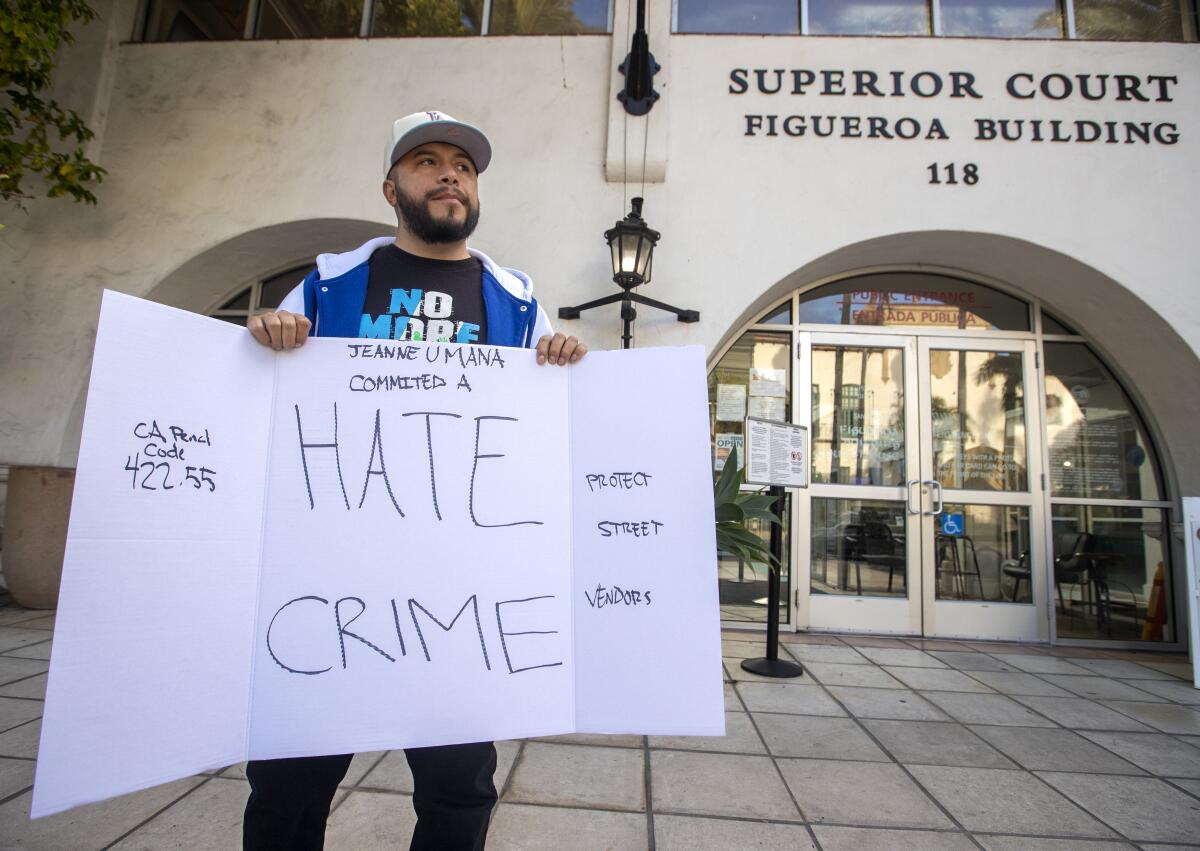
“[Activist Edin Alex] Enamorado isn’t the first person to seek justice for street vendors via social media — but he’s the genre’s Michael Moore. His reels, many still available online, are master classes of comedy and outrage.”
That’s Times columnist Gustavo Arellano, who after multiple interviews and outings with Enamorado wrote a profile that delves deep into the complexities of the activist who set out to defend street food vendors who face violence and racism but has ended up having to defend himself in court on felony charges after being accused of his own violent attacks.
“Some people who appreciate his intent feel he frequently crosses the line between reasonable dissent and vigilantism,” wrote Arellano, who feels that “Enamorado doesn’t deserve the hammer that law enforcement has dropped on him. But he sure ran toward it, then dared them to swing.”
The review: Baroo 2.0
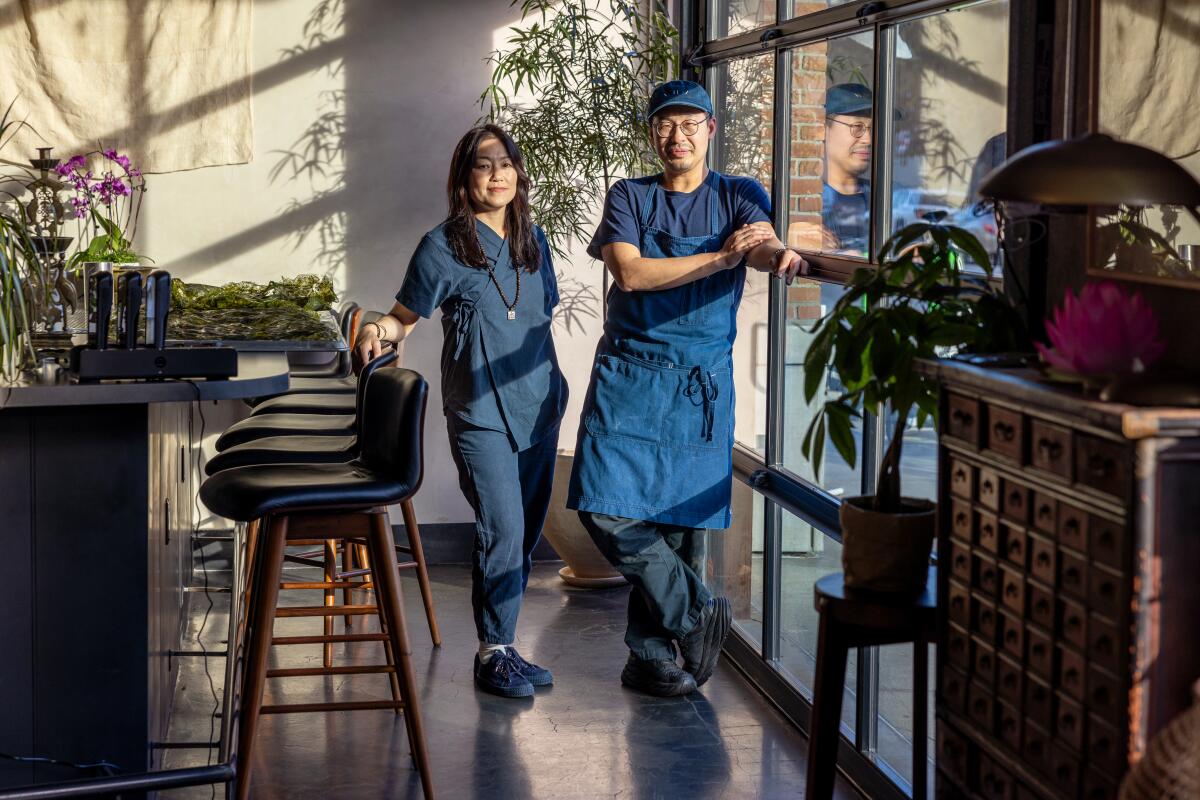
In this week’s review by Times restaurant critic Bill Addison of Baroo, he writes: “If I had to choose one word to encapsulate the creative surge that propelled L.A.’s food culture forward last decade — a momentum that confirmed the city’s status as a global culinary destination, a spate of nonconformism that continues to influence how we think about restaurants — it would be Baroo. ... The original restaurant, unapologetically experimental and ephemeral, reshaped the way many of us thought about the places we go to be fed.”
Now there is a new incarnation of the former strip mall restaurant in a gorgeous Arts District space and Addison is impressed: “The best of Uh’s dishes unfold, like riddles. Presentations are as beautiful and orderly as topiary, and often adorned with shatteringly thin chips for texture, but only the palate can divine the unseen depths.”
The Crawl with Mr. Chow
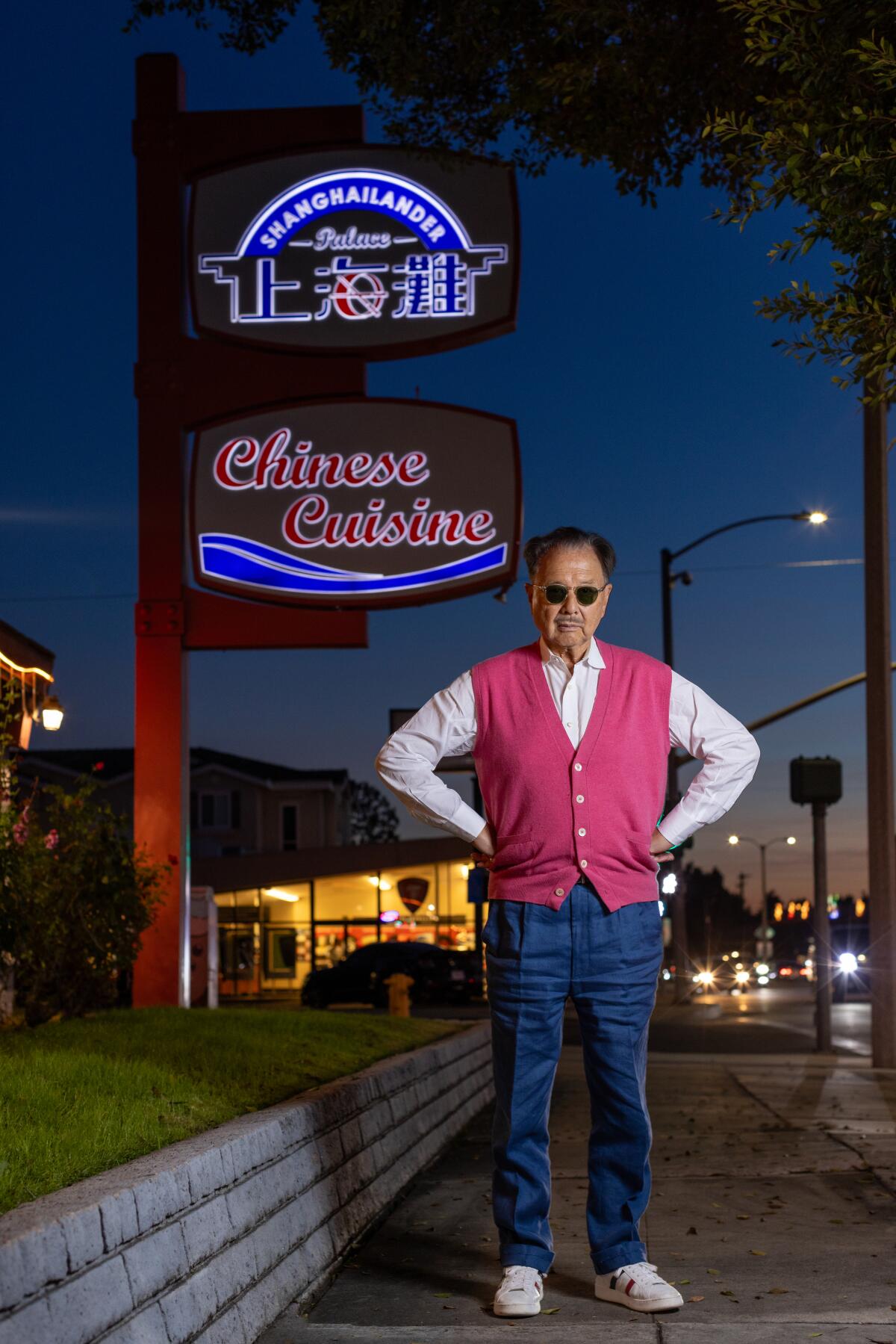
“The founder of the Mr. Chow restaurant empire and subject of the recent HBO documentary ‘AKA Mr. Chow’ has been in the orbit of the world’s biggest celebrities his entire life, and he wants you to know it. He’s turned casually mentioning the names of various stars he knows and calling on various film references into a form of art.
“Among that group of A-list acquaintances is Nobu Matsuhisa, of the more than 50 Nobu restaurants and hotels around the world. Despite his busy travel schedule, Matsuhisa makes time to come by the restaurant to see his old friend.
“‘We’ve known each other a long time, almost 100 years,’ Matsuhisa says.
“‘No, only 99,’ Chow responds with a laugh, not missing a beat.”
That’s just a sample of the great read columnist Jenn Harris gives us in her latest edition of The Crawl with star restaurateur Michael Chow.
Once vegan dining out meant French fries and a salad
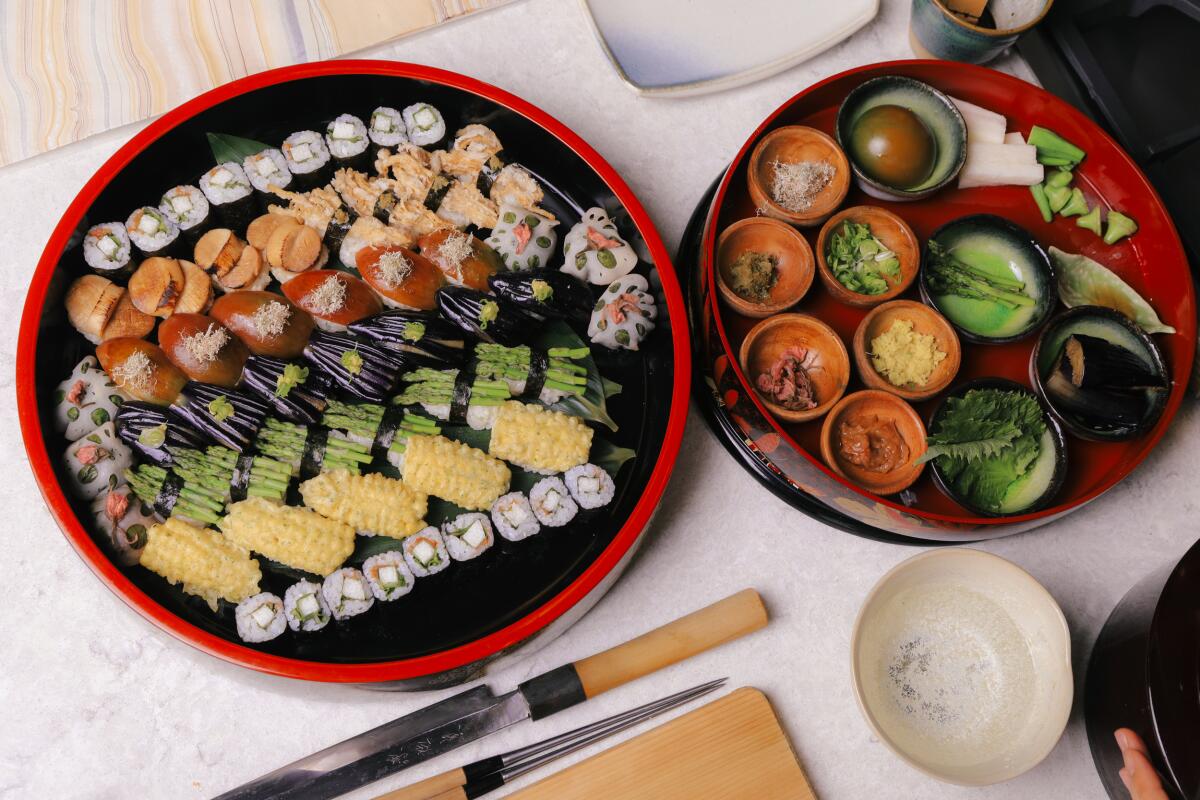
Assistant Food Editor Danielle Dorsey led the Food team’s update of our vegetarian and vegan restaurant dining guide. “You couldn’t even find a veggie burger on most menus. And if you did, they were using a Morning Star patty, which has eggs in it, so it wasn’t even vegan,” filmmaker Liz Jaime told Dorsey about the days when eating out as a vegan often meant ordering French fries and a salad. Among the places the Food team highlights: Plant Sushi Yoko from Yoko Hasebe. I had the chance to try Hasebe’s gorgeous vegan sushi creations when she came to the Times Test Kitchen last year for our package of stories on Los Angeles as the epicenter of sushi. Definitely worth trying whether or not you are a vegan.
Have a question?
Also ...
- Stephanie Breijo introduces us to the Cambodian Cowboy and more of the new Smorgasburg L.A. vendors for 2024 in this week’s restaurant news column, plus details on new spots Birote Deli, Ikigai, Spina, Mangette and the glow emanating from Donald Glover and Luke Wood’s Jellyman Tea.
- Jenn Harris says we all should be eating brown cheese and fish for breakfast. Because it’s “freaking awesome.” The Norwegian treat isn’t easily available in Los Angeles but Little Fish serves the brown cheese brunost on Bub and Grandma’s bread with butter. Another breakfast treat Jenn loves: the Taiwanese breakfast roll at Fatty Mart.
Eat your way across L.A.
Like what you're reading? Sign up to get it in your inbox every week.
You may occasionally receive promotional content from the Los Angeles Times.
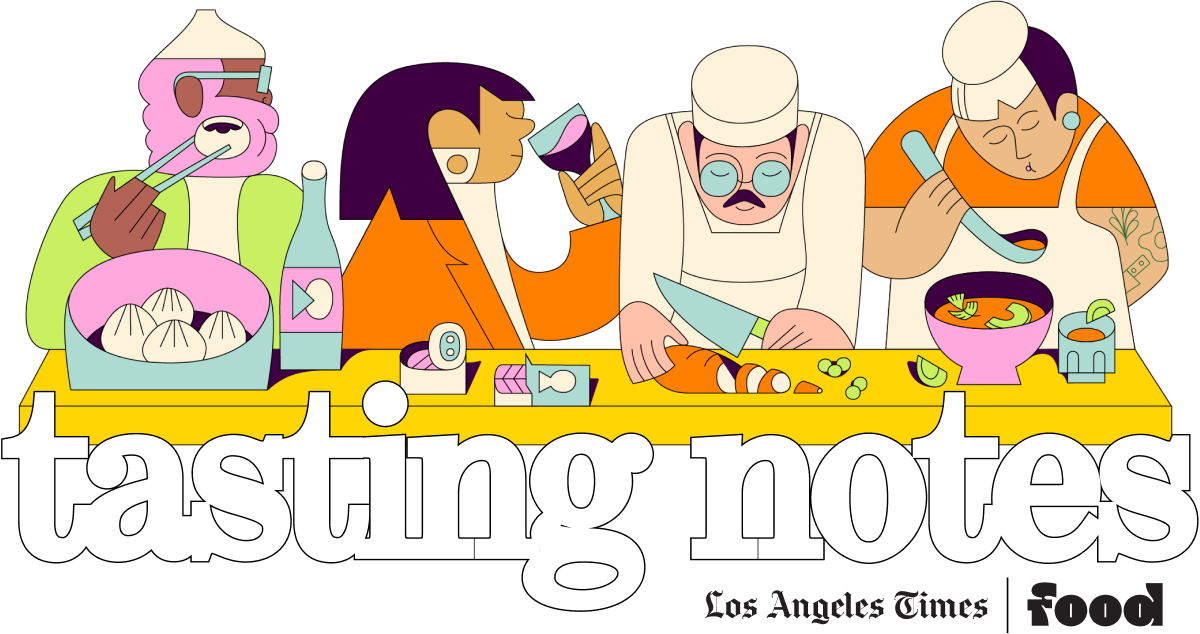
Eat your way across L.A.
Get our weekly Tasting Notes newsletter for reviews, news and more.
You may occasionally receive promotional content from the Los Angeles Times.




